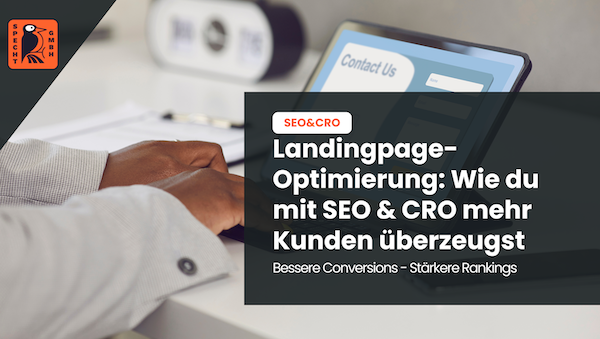In a nutshell: What is brand monitoring?
Brand monitoring involves observing, recording and analyzing statements made by users about a company, brand or product. By monitoring different channels, companies can assess which user reactions occur and react to them.
What exactly does brand monitoring mean?
Brand monitoring means "brand monitoring" or "brand observation" and is part of brand management. With strategically smart brand management, a company's brand can be positioned advantageously at all relevant touchpoints. With the help of brand monitoring, companies are then able to determine the extent to which customers and the public perceive their brand.
These reactions to a company's brand are recorded by monitoring and observing various channels and keywords . For example, mentions, statements and perceptions of customers, interested parties and the public (user-generated content) or legal infringements due to logo and brand name misuse in the SEO-etc.
The aim of brand monitoring is to improve and protect the reputation, authority and image of a company or brand. A conceptual distinction can be made between:
- Brand Protection - exclusively legal aspects,
- Social media monitoring/listening- social channels only.
Thematically, however, the two terms overlap. However, optimal and integrated brand monitoring uses all online channels as a basis for research.
How brand monitoring works
Basically, brand monitoring is a process. A process in which all channels through which users provide feedback are monitored. The aim is to find out where and to what extent your brand has an impact on users. With this knowledge of where and how a brand or product is being talked about, companies also know where they need to start in order to improve user perception.
The most important aspect of brand monitoring is active feedback, i.e. direct reviews, questions or other positive or negative comments from users. Channels and keywords that can be used to provide such active feedback include
- Social networks such as Instagram, Facebook, X, LinkedIn, TikTok;
- Blogs, forums;
- stationary product sales;
- of brand names, products etc.
What are the benefits of brand monitoring?
Brand monitoring offers companies many advantages, such as always being aware of how customers, interested parties and competitors perceive the brand and reacting accordingly to defamatory statements. This also enables a precise assessment for potential product optimizations.
Brand monitoring is also used to identify marketing channels to enhance brand reputation. Market research is also conducted in order to respond to current trends and demonstrate expert status.
Analyzing relevant keywords as part of brand monitoring provides insights into competitor conversations on social networks. In addition, companies regularly receive information about the advertising strategies of their competitors in order to adapt their own marketing strategy.
Why do you need brand monitoring?
By monitoring these channels and keywords for marketing purposes, companies can then see what is going well and what is not. They can deal with user reactions appropriately and improve communication accordingly.
Brand monitoring is therefore used for various purposes:
- Building a corporate brand,
- Reconciling dissatisfied customers and
Improving the image
Companies use social networks in particular to improve their own reputation. This is because many users talk about their preferred brands and products online. In this case, brand monitoring pursues two goals in order to improve your own image: uncovering weaknesses in customer communication and then rectifying them.
Criticism & defamation
Regular and systematic brand monitoring can help to respond quickly to negative mentions of a brand name.
Domain & brand name registrations
If a specific domain or a protected brand name is registered, legal action can be taken with the help of brand monitoring. Companies thus ensure that their brand is protected.
How important the importance of the domain name for success in SEO you can find out in our Specht GmbH SEO blog.
Negative marketing & brand bidding
If competitors use a brand name of another company to emphasize their own services more positively and portray those of others negatively, illegal practices in brand bidding in particular can be prevented and/or punished.
Ad hijacking
Become advertisements are copied and redirected by third parties in order to generate traffic for a project and receive commissions, brand monitoring can help to prevent/prosecute these practices.
Brand monitoring tools
There are several tools that can be used for brand monitoring. For example, brand mentions and/or infringements can be recorded. Commercial brand monitoring tools include Linkbird, Brand Watch, Sprout Social, Sysomos and Radian6. We at Timo Specht have also put together a small selection of free brand monitoring tools for you:
Google AlertsThis tool can be used to create e-mail notifications that are sent for specific keywords.
Technorati: Helps to search for blogs, blog content and blog reactions.
Backtype & coComments: These tools help you search for new comments on blog posts.
Yacktrack & Commentful: Both tools realize keyword searches in social networks.
Boardtracker, Boardreader & Big Boards: This can be used to monitor discussions in forums relating to brand terms.
FriendFeed & Social Mention: These two tools are search engines that can be used to search social networks for specific terms.
-
Free
SEO strategy meeting
In a free SEO strategy talk, we uncover untapped potential and develop a strategy to help you become more successful on Google.

- More organic visibility
- More organic visitors to your website
- More inquiries & sales
Brand monitoring - how it works
There are several steps within brand monitoring that companies and brands can implement directly:
- Set a goal - e.g. learn more about the target group and their attitude towards the brand.
- Determine brand monitoring tool .
- Find out the digital space of your own target group - networks, find suitable influencers.
- Finding suitable keywords & regularly measuring the success of advertising campaigns.
- Continuously filter all incoming notifications and identify patterns.
- Measure the success of postings - e.g. with a campaign management tool.
- Set up an emergency plan to react immediately and appropriately to shitstorms and negative reactions.
- Examine conversations of the target group and observe the norms that apply in the social community.
- Between inbound and outbound conversations.
- Build a network and community.
Conclusion: What is brand monitoring?
Brand monitoring is an important part of brand management that enables companies to understand, improve and protect the perception of their brand by customers and the public. By observing and analyzing user comments across various channels, companies can recognize how their brand is perceived and react accordingly.
The aim of brand monitoring is to strengthen the reputation, authority and image of a company or brand. It enables companies to respond appropriately to user feedback, improve communication, change the minds of dissatisfied customers and protect brand reputation.
By using brand monitoring, companies can actively respond to criticism, track infring ements and prevent negative marketing practices. With the help of brand monitoring tools such as Linkbird, Brand Watch, Sprout Social and others, brand mentions and infringements can be recorded.
- Do you know my SEO newsletter?
Register now and receive regular tips from the experts.






